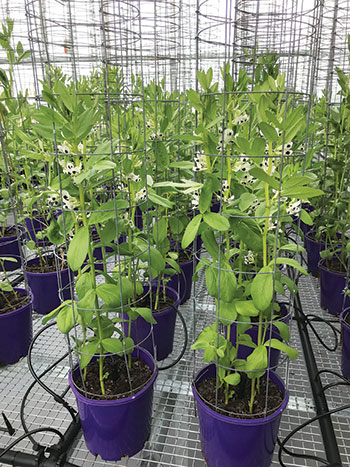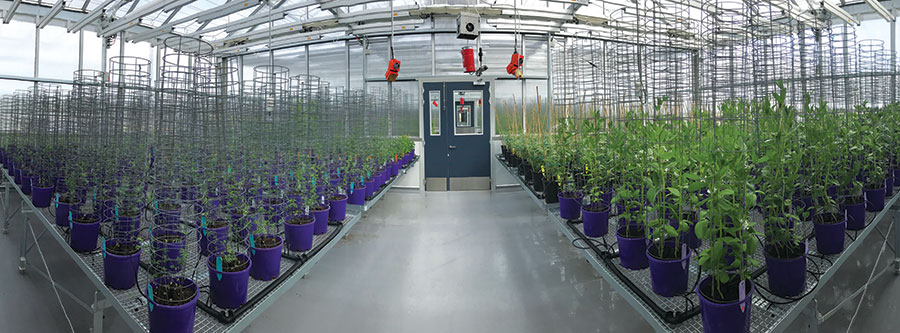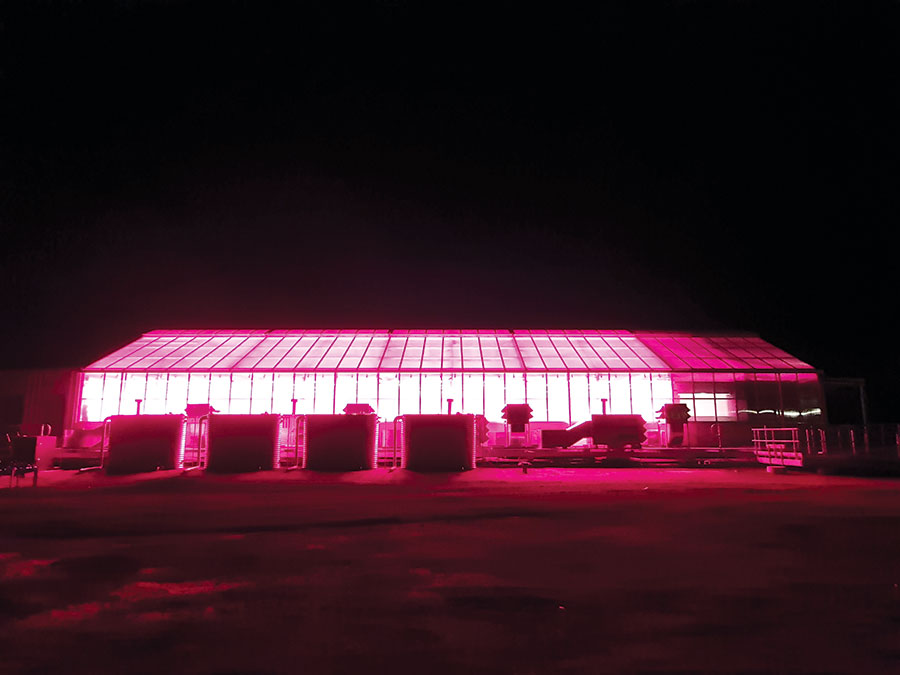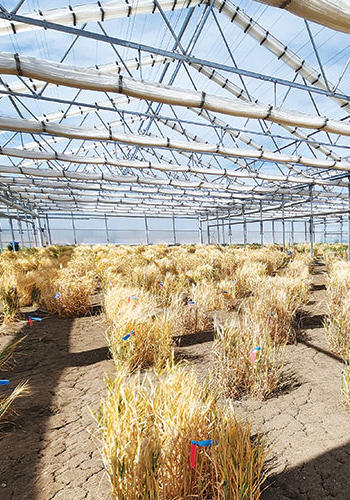As the keeper of genetic diversity, the Australian Grains Genebank (AGG) is the beating heart of the grains industry’s breeding efforts. However, a need was identified to upgrade the AGG to integrate into its operations the significant advances made in recent times in genomics, phenomics and big data informatics.
This upgrade is being undertaken as a $30 million, five-year co-investment by GRDC and the Victorian Government from 2022 to 2027. Its aim is to unlock the genetic potential of plant genetic resources for the direct benefit of Australian grain growers. Recently completed was an $8.8 million infrastructure upgrade to Agriculture Victoria’s Horsham SmartFarm, also as a co-investment.
The upgrade aims to transform the AGG from a traditional genebank into a bio-digital resource centre, where digital and genomic information is used to make the plant genetic resources conserved within the AGG even more accessible and useful to the grains industry.
AGG leader Dr Sally Norton says impacts from the AGG Strategic Partnership are already improving the genebank’s operations as three recently upgraded facilities become fully operational. These are the AGG’s quarantine, seed multiplication and post-harvesting seed processing facilities.
Acquisition of high-value seed
Impacts are especially apparent in the way novel germplasm is identified and made accessible to Australian research and breeding programs.
 Faba beans growing under LED lights within the new Post Entry Quarantine facility. Photo: Shane King
Faba beans growing under LED lights within the new Post Entry Quarantine facility. Photo: Shane King
It starts with a close working relationship with the breeding community to better target germplasm that most likely contains traits needed by growers, such as Ascochyta blight resistance in chickpeas.
Globally connected databases facilitate the acquisition of germplasm most likely to deliver on important traits. As Dr Norton says: “We do not bring in anything that does not have a direct user.”
Before any new germplasm even enters quarantine, six seeds are sampled from each imported packet using destructive methods. The DNA is genotyped and catalogued. Importantly, the genotyping technology used is aligned with the genomics platforms used by breeders.
That brings the power of ‘comparative genomics’ into play. This includes the ability to map the relatedness of new germplasm against the AGG’s entire collection, as well as provide industry with an understanding of the material’s potential utility for crop improvement by allowing its genetic makeup to be linked to research and breeding knowledge.
Actual seed is then grown out in a new glasshouse facility that is designed to meet Class 5.2 Australian Government Biosecurity Containment standards. That means the glasshouse is under negative airflow to prevent the escape of airborne pathogens, plus 250 micron filters guard all openings, such as air vents and drains.
The 400-square-metre glasshouse contains a growth area of 330m2 – double the capacity of the old glasshouse. Importantly, it is also equipped with LED lights that enable accelerated flowering times. The temperature, irrigation and nutrition systems can be controlled digitally and programmed to accelerate growth and maximise yields.
The glasshouse is designed with four compartments that can be controlled independently to allow for different growth requirements among cereals, oilseeds and pulses.
“The new facility can accommodate 1500 pots per quarantine cycle and the accelerated growth rates mean we can perform 2.5 cycles per year, with the plants producing more seed than in the past,” Dr Norton says.
It all adds up to the ability to import more strategically useful material and process it faster while delivering seed to industry in larger quantities (saving breeders up to two generations of growth time). In fact, material (once cleared for release) can move straight from the quarantine facility to field trials.
“This facility is currently in its third cycle, with 1800 accessions having already made their way through to industry over 15 months,” Dr Norton says. “In every way possible, it is a beautiful facility. It fully integrates industry needs with the most advanced way of working to have the most impact.”
Industry engagement is now gearing up further through a series of consultations that aim to understand future directions so the AGG staff can better anticipate industry’s future germplasm needs.

Inside the new Post Entry Quarantine facility at the Australian Grains Genebank. Photo: Shane King
Seed multiplication facility
With its retractable roof and walls, the new greenhouse provides the AGG with a protected field environment in which to bulk up seed. It was designed as a low-energy irrigated facility with in-built automated systems to protect plots from extreme weather conditions, such as high winds. The control system can also be operated remotely through a phone app.
The in-field growing environment covers 3000m2. It can host 900 plots per cycle and process two cycles per year. This includes a winter crop cycle sown in late March and an additional cycle for crops such as sorghum and mungbeans sown in late October. In all, it quadruples the previous capacity while maximising seed quality and yield.
The seed is then conserved into the genebank before being distributed to industry in Australia. Some seed is also sent overseas to support international agriculture. The AGG distributes about 30,000 lines per year, mostly within Australia to underpin research and breeding efforts to generate new, improved plant varieties.
“The seed multiplication facility allows us to grow seed in the ground to produce high-quality grain with higher yield than pots,” Dr Norton says. “While this kind of greenhouse technology has been used in horticulture for many years, we believe this is the first time it has been applied to grain crops.”
Post-harvest processing centre
The way seed is grown out and processed affects its longevity, or shelf-life, within the genebank. To maximise the viability and longevity of seed stored in the collection, the AGG now has a new post-harvest processing facility.
Entire grain heads or pods are cut and then moved immediately into a controlled environment room, where the material is kept in suspended animation at 20oC and 20 per cent humidity. During this time, quality control tests are undertaken. This includes taking images of the head and seed – information that is added to the seed’s digital accession information. Only then is the material threshed, cleaned, packaged and stored.
Dr Norton says this facility consolidates all the post-harvest steps at a single, high-throughput site: “This facility is a game changer.”

The new Post Entry Quarantine facility at the Australian Grains Genebank is equipped with lights to accelerate plant growth cycles. Photo: Sally Norton
Impacts of upgrades
A clear aim of the upgrades is to better support the Australian research and breeding sectors. In this regard, Dr Norton believes the investment is already having a huge impact.
 Cereals growing inside the regeneration greenhouse. Photo: Sally Norton
Cereals growing inside the regeneration greenhouse. Photo: Sally Norton
“The quality of the collection and how it is curated has undergone a step change,” Dr Norton says. “We have removed duplications, enhanced the collection’s diversity and installed systems that allow us to better support much more targeted trait discovery work by pre-breeders and breeders.”
She adds that the facility is also more agile in its ability to adapt to future challenges and adopt emerging innovations. “We have the bones to grow with technology,” she says.
This is especially important given the breakthrough capabilities of modern breeding, especially with regards to genomic selection technology. This technology can run genomic data against decades worth of field trial, genetic, agronomic and seasonal weather data. It can identify the genetic patterns that perform best against tough growing conditions and makes unprecedented genetic gain possible.
As a technology, however, it has a near-unquenchable thirst for ever more genetic diversity. As a result, the AGG and how it operates become quintessentially important to the delivery of the most desirable or necessary crop traits, such as heat tolerance.
“My motto is to make the biggest possible difference on behalf of growers,” Dr Norton says. “In practice that means a much more targeted, more integrated way of working that is as data rich as today’s breeders need it to be to deliver improved high yielding, disease resistance varieties to growers now and into the future.”
More information: Sally Norton, sally.norton@agriculture.vic.gov.au

























































